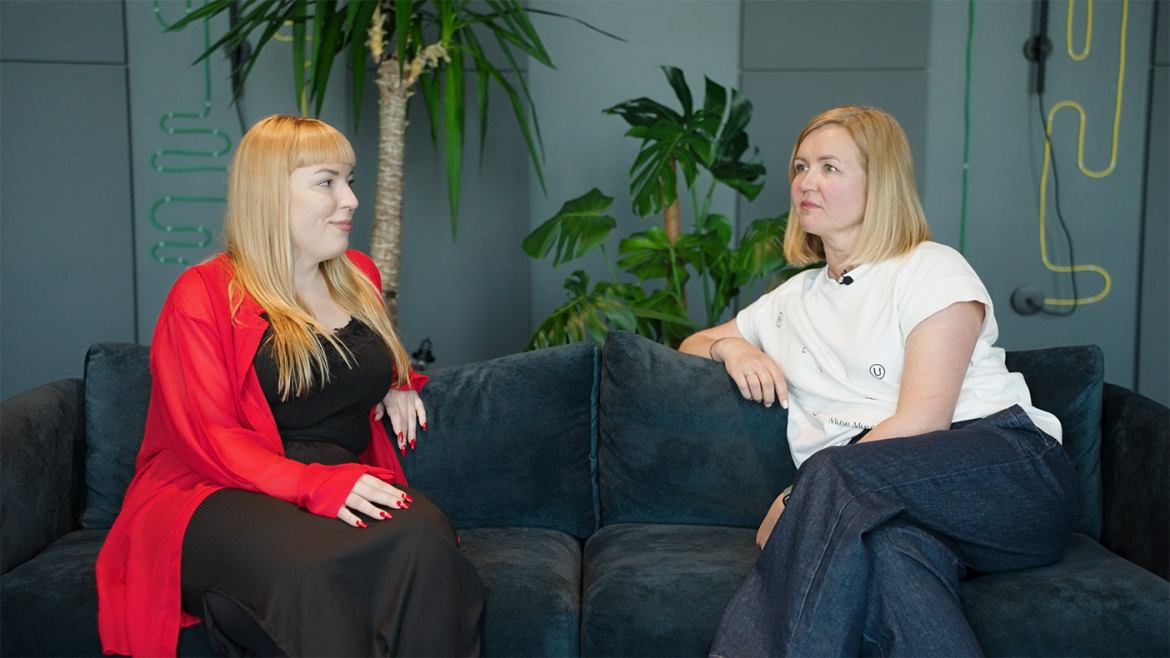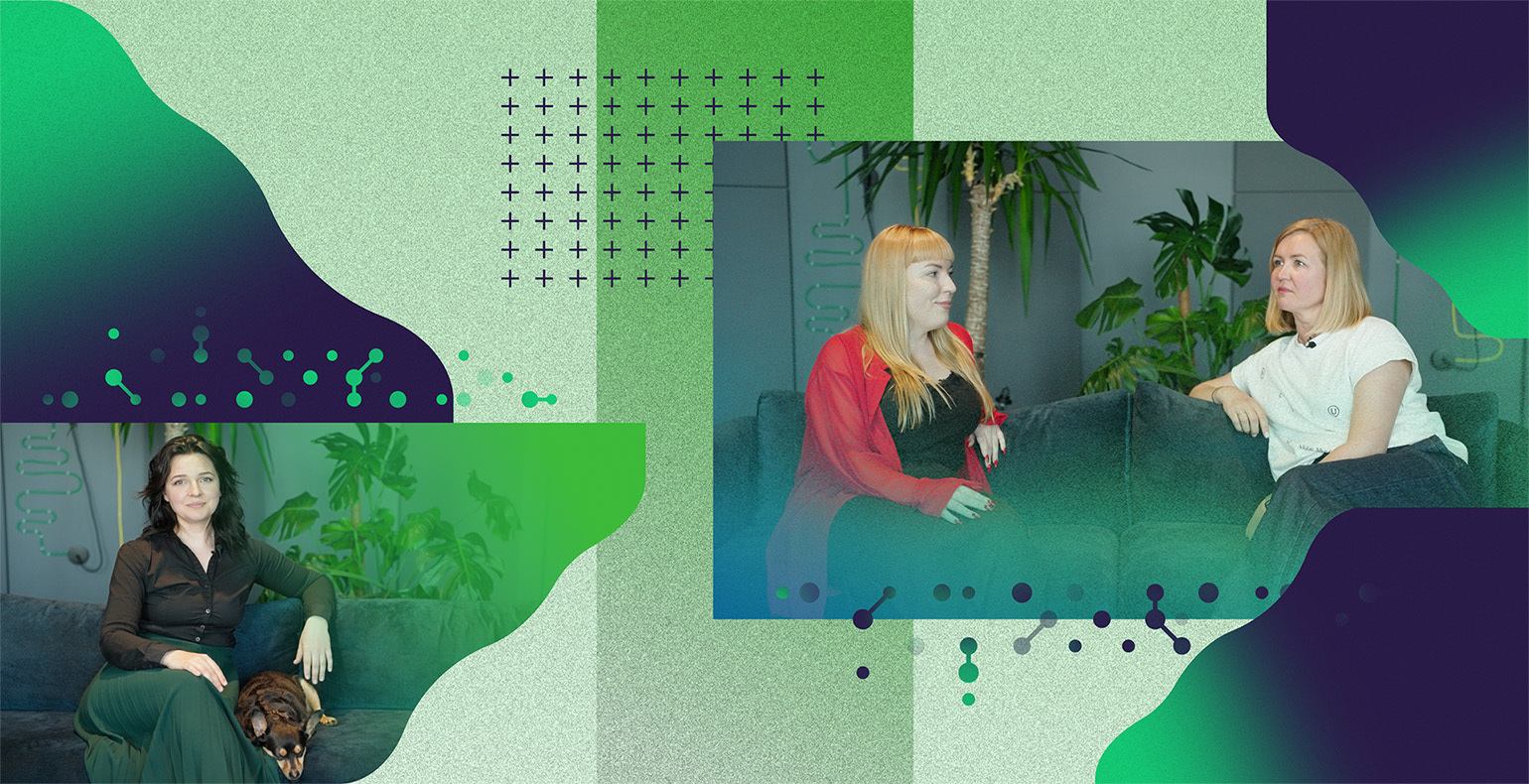How we helped Elisa Estonia make their stores paperless through UX/UI design
One of the latest pioneering projects in sustainability is Elisa’s Paperless Stores project, created with Trinidad Wiseman. Documents in Elisa’s paperless stores are signed digitally, without paper. Instead, mobile IDs, Smart IDs, ID cards, and digital pens are used. The initiative aims to reduce paper usage, optimise document management processes, and make the contract signing process more convenient for customers. The transition to digital signatures takes place gradually, store by store.
To get a more detailed overview of the project, we spoke with Kristi, Elisa’s project manager and analyst, and Saale, Trinidad Wiseman’s user experience designer. They discussed the project’s goals, impact, and collaboration.
What is the broader impact of Elisa’s Paperless Stores project?
Kristi: Elisa’s 16 stores currently print about 100,000 pages per month. An average tree produces approximately 10,000 A4 sheets of paper. Thanks to the digitalisation of 100 000 pages, we save the environment to a considerable amount.
Additionally, all paper documents at Elisa need to be archived. Elisa’s archive is in Tallinn, and to ensure that all documents are digitised and preserved, they are currently transported to Tallinn from all over Estonia. Thanks to the paperless store concept, we will no longer need to physically transport documents.
Through digitalisation, we achieve significant paper savings, reduce our carbon footprint, and free up valuable working time in the stores and the archive. The likelihood of a contract getting lost en route to the archive decreases significantly. This, in turn, reduces the risk of data breaches since contracts contain sensitive personal information whose disclosure could lead to financial and reputational damage.
Saale: It is also much more convenient for customers, as they do not have to take paper documents home. Instead, they can access the digital contract in the self-service portal or request it to be sent via email. Paper contracts are most probably on their way out.
What was the most inspiring aspect of this project?
Kristi: Collaboration with new people during a project always inspires me. We also have an excellent development team whom I can trust and rely on.
The best moment is always when you finally see the completed development live, and it receives positive feedback. The Paperless Store project won the title of Elisa’s best project in the first quarter of 2024 in the Private Customer Division.
Saale: For me, the most exciting part was the impact of this project – I felt I was contributing to a ground-breaking project.
The goal of a user experience designer is to make users’ lives as simple, worry-free, and convenient as possible. This project had that effect—it had a measurable and tangible impact. It also stood out with its fresh touch.
I designed the user interface so that customers use only the tablet and do not need to interact with other interfaces, for example the computer user interface. They have only one touchpoint. Those who do not have an ID card, Smart-ID, or mobile ID can draw a digital signature on the tablet, replacing paper. Those with other identification means do not have to do this.
Often, designers do not see the fruits of their work for a long time – it takes a while before a prototype becomes a real solution (and sometimes it never will). I liked that the solution was developed and implemented very quickly.
Kristi, what advice would you give to other project managers or analysts starting similar digital transformation projects? How do you get the team on the same page?
Kristi: The most important thing is the project team—the people you work with. If the whole team believes in a common goal and sees the project's benefits, development will go smoothly.
Kristi: As a project manager, you must keep everyone informed and included. Most mistakes usually happen when there are communication gaps, so I recommend being precise in giving instructions. Talk to people.
Let us have a closer look at the project. Saale, what was the project like?
Saale: When the project came to the table, my first task was to look with the analyst at what needed to be done, what problem we were going to solve, and what the requirements were. Based on that, we started developing the solution.
We had to design the user interface for the tablet used for signing. The existing computer system used by Elisa’s customer service representatives had to get special parts merged with it, so that employees could perform specific actions during the order process.
During the project, I drew a prototype in Figma, the main tool for user interface designers – a preliminary version of the real solution. Based on this, the tablet interface was developed, and the necessary parts got added to Elisa’s service representative’s order flow.
In a way, did you get to create an ideal system?
Saale: In some ways, yes, but there are also requirements and limitations. Especially when you must add something to an existing system (ordering flow), as in Elisa’s project. Then you must consider what is already there.
Either way, when dealing with an older solution, you look at it and think, “Oh, I’d like to do something different and better,” but that’s not part of this development. Redoing the system is an excessively big and expensive job.

Who else was on the team?
Saale: I worked with Elisa’s project manager and analyst. The analyst is a member of the Elisa development team that creates the given solution. I also interacted with developers, with whom we solved emerging issues.
What challenges arose during the project?
Saale: Sometimes, during later testing, a nuance emerges that we had not thought of initially, or a small hitch that we usually resolve quickly.
Ideally, before you start prototyping, you carefully think through everything, play through, and consider different scenarios with the analyst. You map out user journeys, analyse, and consider as many unusual cases as possible.
We found that when the customer stops the signing process on the tablet, additional functionality is needed so that the service representative can cancel the signing from another device. Also, the system should inform the representative that the customer has not finished signing (the representative cannot see the customer’s tablet screen). Otherwise, a new customer might continue signing the previous customer’s contract.
This issue emerged in the early technical testing phase and was quickly resolved.
Kristi: The challenges were primarily related to hardware – which tablet to choose and how to ensure the necessary functionalities are secure since we are dealing with customer contracts. We had excellent cooperation with Elisa’s IT user support, who solved the challenges.
How did the user testing process go, and how did customer feedback shape the final design?
Saale: This process helped perfect the solution. I will give you an example. We had -designed a large signing area on the tablet because Elisa had planned for customers to sign with their finger. Finger signatures are bigger and have a larger touch area.
But people started grabbing the tablet pen and writing tiny signatures with it (even though they had the whole tablet screen). Since the entire box transforms onto the contract, the signature appeared on the contract as a tiny scribble. Therefore, we had to make the signing box smaller for customers so that the signature would be more easily recognisable.
This situation was easy to solve; we just needed to adjust the design and make the signature area smaller.
What makes a good user experience designer?
Saale: To solve problems effectively, you need determination and energy. It is also crucial to be genuinely interested in users—what they want, how they behave, and what their concerns are. When meeting with clients, always keep the user in focus and make them a priority. Even with business or technical constraints, the user’s needs should come first. The user experience designer is also expected to offer the best expertise in creating user-friendly solutions.
Saale: “A user experience designer keeps the user at the heart of everything.”
You must be ready to communicate and persuade, involve, and argue your ideas. To achieve a good result, you also need to explain the importance of testing and conducting user research.
Kristi, why did Elisa choose Trinidad Wiseman as a partner for this project?
Kristi: We have had outstanding collaborations with Trinidad Wiseman on previous projects, and their designers are excellent—this led to the decision to do this project together.
During the project, we discussed various ways to ensure a smooth user experience for both the customer and the store staff. We also learned from users how they preferred to sign and, being flexible, made the necessary changes.
Kristi: We highly value our collaboration with Trinidad Wiseman.
How was the cooperation with the Elisa team?
Saale: I have been with Elisa for four years since the start of the pandemic, and during that time, I have grown close to the people there. We had a very pleasant, smooth, stress-free cooperation with the analyst-project manager Kristi, and we solved all ongoing problems together.
My colleague Ingmar and I visit Elisa so often that many employees there consider us part of the company. We are practically part of the crew.
Various events also connect us, such as the customer event Inspiratsioonipäev and the conference WUD (World Usability Day), both organised by Trinidad Wiseman. Elisa participates in both, and they always have their stand up at WUD.
Good cooperation is based on professionalism, reliability, enthusiasm, and satisfaction with the other party’s work. Reliable results, team dynamic fit, and good relationships are important. It must be pleasant to work together.
Contact us if you're looking for a partner with whom to discuss service design.







